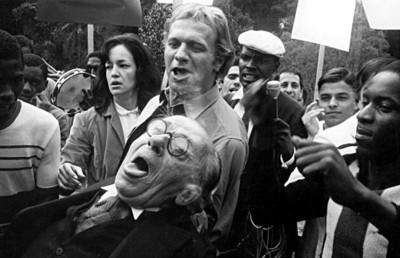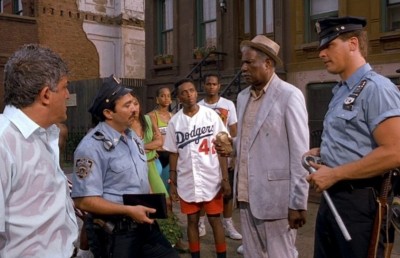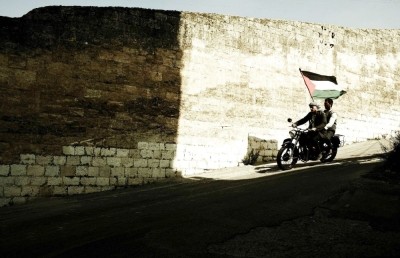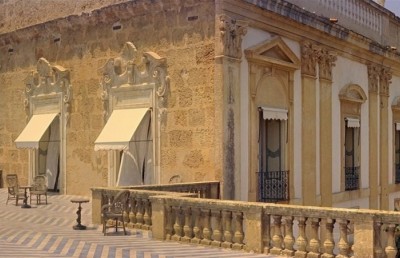The Representation of Non-Violent Political Activism in Bloody Sunday and Omagh
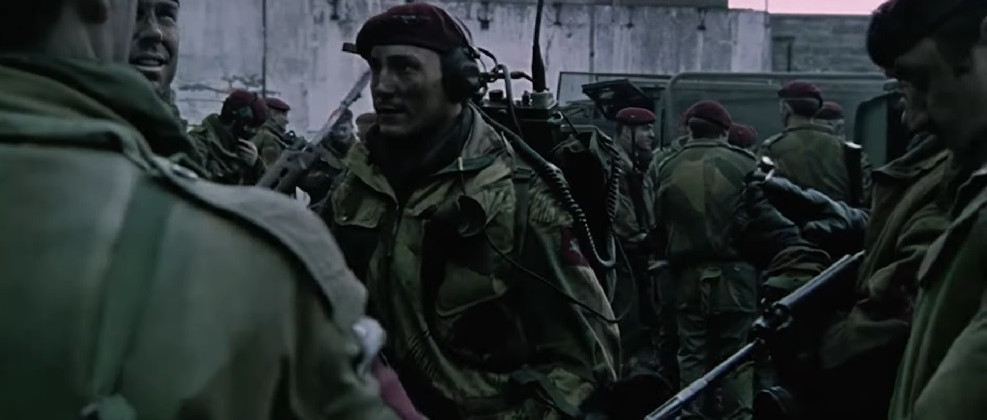
The debate between violence and constitutionalism runs through films about Irish history, and in particularly those which deal with political violence in Northern Ireland (generally referred to as “the Troubles”). This conflict is typically dramatized in the form of an Irish Republican Army (IRA) member considering giving up violence. Two relatively recent films, Bloody Sunday (2002, Paul Greengrass) and Omagh (2004, Pete Travis) are unusual and interesting because the question they dramatize is whether their protagonists should reject non-violence, but offer different conclusions to its effectiveness and legitimacy. The similar and different ways in which they represent the violent and non-violent options, as well as the state apparatus and the larger community, particularly Protestants, is central to how they reach their different conclusions. These conclusions, in turn, lead to the question of whether, despite being very close in style, dealing with similar concerns and made within a few years of each other with some of the same key figures involved, it is possible to see them as embodying two different types of films that surfaced during the Northern Ireland peace process which followed the Good Friday Agreement in 1998.
Historically, one of the constants in films dealing with the Troubles is the dramatic tension between two paramilitary gunmen. The more sympathetically portrayed is weary of violence and wants to consider other means or (an occasional variant) quit altogether, while the other remains ruthlessly dedicated to physical force. It is the dynamic between Johnny (James Mason) and Dennis (Robert Beatty) in Odd Man Out (1947, Carol Reed), Fergus (Stephen Rea) and Maguire (Adrian Dunbar) in The Crying Game (1992, Neil Jordan), Jimmy (Jeff bridges) and Ryan (Tommy Lee Jones) in Blown Away (1994, Stephen Hopkins) and, of course, Michael Collins (Liam Neeson) and Eamon de Valera (Alan Rickman) in Michael Collins (1996, Neil Jordan), and there are many other examples. In part, this is a strategy to take a character who might be difficult for audiences, particularly American audiences, to identify with (a member of a terrorist organization) and make him sympathetic by distinguishing him, and it is almost always a “him” in these films, from the really violent terrorists, usually played by actors less well known than the peacefully-inclined heroes. However, this also allows these films to deal, if in some cases briefly, with the question of the legitimacy and usefulness of political violence.
This concern is central to the Jim Sheridan-Terry George trilogy of Troubles films. In each of these, characters must choose between violence (which includes the self-inflicted violence of hunger strikes) and non-violence, and the debate is framed as whether they should reject violence. Gerry (Daniel Day Lewis) in In the Name of the Father (1993, Jim Sheridan) at first admires the IRA prisoner responsible for the bombing he was imprisoned for, but then rejects him. Kathleen in Some Mother’s Son (1996, Terry George) at first supports her son’s hunger strike despite not sharing his republican (nationalist) politics, but finally decides to save his life by ending his hunger strike. In The Boxer (1997, Jim Sheridan), Danny (Day Lewis again) starts from the point of having rejected, and then continues to reject, his past IRA involvement. What is different about Bloody Sunday and Omagh is that their central characters act from a context of non-violent political action, and must grapple with its legitimacy and effectiveness.
Bloody Sunday, a dramatization of a mass civil rights march in 1972 that ended in the massacre of unarmed protestors by British soldiers, efficiently lays out the situation. The main characters are immediately placed in opposition by cross-cutting between two press conferences, opening with what writer-director Paul Greengrass calls in the DVD commentary “the two sides of the argument” (Greengrass). In this sequence, Northern Ireland Civil Rights Association (NICRA) march organizer and Member of the Northern Ireland (Stormont) Parliament Ivan Cooper (James Nesbitt) is immediately identifiable as the hero of the story, while British Army Major General Robert Ford (Tim Pigott-Smith) is clearly the villain. This is partly achieved through the use of clashing sounds as the “civil rights anthem ‘We Shall Overcome’ jars both acoustically and politically with the sound of military drums beating to the rhythm of the army press conference” (Blaney 120). Associating Cooper and his fellow marchers with a song holding such emotional and historical resonance cannot help but be a cue to the audience. This is reinforced through the casting of James Nesbitt, described by Martin McLoone as “one of British television’s most popular actors” (42) through his starring role as the affable “average guy” Adam in the situation comedy Cold Feet (1997-2003), as Cooper. Nesbitt is ideal for the part because, like Cooper, he is a Northern Ireland Protestant, but, as Aileen |Blaney points out, one whose “widespread popular appeal is emphatically not contingent upon his Protestant Ulster identity, and consequently . . . does not alienate viewers of an alternative, or no, sectarian persuasion” (127). This utilization of Nesbitt’s “common man” persona to establish Cooper as the audience surrogate is augmented by the identification of Cooper’s viewpoint with the filmmakers’ which is suggested by the scene where Cooper “directs” a cameraman to film a line of marchers snaking behind the platform they are standing on (Greenlaw 9). The casting of Tim Pigott-Smith is also very deliberate. Indelibly associated with the part that first made him famous, the psychopathic and racist army officer who tortures and persecutes the handsome and sympathetic Indian hero in the television mini-series The Jewel in the Crown (1984), in this film he plays General Ford with “customary cold zeal” (McLoone 43).
The two “sides” are also represented in different ways. While there are characters shown who embody divergent views, the Roman Catholic community of Derry is shown as essentially united. A cold-eyed IRA commander tells Cooper “marching’s not going to solve this thing,” while Westminster M.P. Bernadette Devlin (Mary Moulds) accuses him of “selling out.” But the IRA man agrees to stand aside (as Cooper tells him to “watch me” to see the effectiveness of non-violence) and Devlin and fellow People’s Democracy radical Eamonn McCann (Gerard Crossan) are easily outmaneuvered by the canny Cooper. Significantly, they are shown as differing only in tactics, but not in their goals, which are left largely undefined. Although the objective of the march, an end to internment (arrest and imprisonment for an indefinite term) without trial, is mentioned several times and is very present on the signs being carried, it is never explained. Instead, the film presents a vaguely articulated wish for an end to “Unionist oppression” and Cooper’s wistful desire for a “normal life.” Cooper’s story is mirrored by that of “average teenager” and eventual victim Gerry Donaghy (played by Donaghy’s nephew, Declan Duddy) (Greengrass), who, along with his “Derry young hooligan” friends, is shown wavering between NICRA’s non-violence and the IRA. In a breakfast conversation with his sister, he shows that he too is only looking for a “normal life.” This life includes a Protestant girlfriend, and it is interesting that the only Protestant Northern Irish shown in the film besides her are Cooper and, very briefly, Cooper’s parents. Cooper describes himself as the “only Protestant supporter of Civil Rights,” but having these characters, all sympathetic to the Civil Rights movement, as the sole representations of Derry’s Protestants gives a different impression and, as Blaney comments, “elides a narrative emphasis, all too common in a great many other representations of the conflict, upon the polarization between Catholic and Protestant communities” (126). This can be seen as a continuation of what Brian McIlroy has called “the anti-imperialist myth,” where the Protestant community (which overwhelmingly opposed Cooper’s position) is “dismissed from history” and the conflict is portrayed as a “struggle between Britain and Ireland rather than between two ethnic communities within Ireland” (116-117).

Omagh
Posed against this united Irish population is a British Army shown as “fractured, with divisions within the regiment and military command headquarters” (Sweeney 157). Where the characters offering alternatives to Cooper, such as Bernadette Devlin or the IRA commander, are never privileged by having their point of view linked to that of the camera, this is not true of the British side of events. This is told not through the point of view of Ford, but of characters who show through their expressions and demeanor, which are associated with the camera’s point of view, that they do not approve of the actions of Ford and the British paratroopers under his command. The British characters who act as audience surrogates are Brigadier General Maclellan (played by Nicholas Farrell, a familiar face from generally sympathetic roles in British television and films) and private 027 (Mike Edwards), a character based on the only paratrooper present on Bloody Sunday who has contradicted the official version (Blaney 123). Ellen Sweeney describes these characters as “Good Brits,” whose role in this film is to “substantiate the camera’s visions of the events of Bloody Sunday” (157). So although the film seems to provide perspectives from both sides, in fact both perspectives reflect the same point of view.
Having introduced the two sides, the film then tests the theory of non-violence. This is set up by Cooper’s defiant challenge to the IRA commander to “watch me” to see what marches can accomplish, by shots of the “young hooligan” teenagers becoming exhilarated and impressed by the size of the march, and by a speech Cooper gives where he tells the marchers that Northern Ireland is at a crossroads and must choose the non-violent way. Greengrass describes the sequence where some marchers do not follow the platform truck which turns to avoid confrontation and instead advance on the barricades to taunt and throw stones at the British soldiers manning them as “the heart of the film, because this is the moment that the crowd splits” and asks “what price leadership if the people don’t want to follow?” (Greengrass). This is then followed by the extended sequence which brilliantly and graphically details the reckless actions by the British paratroopers (and the commanders who deployed them) that resulted in the death of 14 unarmed civilians. McLoone has written that the general air of confusion, caused by the cinéma vérité-influenced shooting style where it is not always clear who is doing what, “seems to let the British authorities and the army off the hook” (42). This is an odd comment, as the film presents Ford arriving with orders “from Downing Street” (the residence of the British Prime Minister) to “teach the locals a lesson,” and overriding the wishes of his local commander (Maclellan) and the advice of a (Catholic) commander of the Royal Ulster Constabulary (RUC), played by Gerard McSorley. It also shows paratroopers shooting unarmed civilians, as in the sequence where a group of people scurry desperately across a courtyard after a ceasefire is called, which Kelly describes as being framed as “a terrifying turkey shoot” (79). As Jim Hoberman writes, the “spectacle of British paras firing point-blank into a running, crawling, cowering crowd . . . is as visceral in its way as any staged atrocity since the Odessa Steps sequence from ??Battleship Potemkin??” (183). It then follows this with sequences where various British Army personnel collude to falsify and manufacture evidence. It may be more accurate to describe the film, as one British M.P. has, as “anti-British” (Hoberman 183). But this is only because it is accurately re-creating an anti-British reality.
The images used to depict the aftermath of the massacre are telling in the film’s attitude towards non-violence. The focus is still on Cooper, but whereas his voice is one of the dominant sounds of the first part of the film, he has only a handful of lines for the remainder. Mostly he wanders among the dead and wounded, too shocked to speak. As McLoone writes, “after the carnage, Cooper is a broken and disillusioned man, and . . . his final words are to acknowledge that his commitment to non-violence is an irrelevance amid such carnage” (43). Greengrass says that his intention in these scenes is for Cooper to project a “sense of personal responsibility for what happened” (Greengrass). This suggests that Greengrass believes that while the British command acted recklessly in sending in the paratroopers, Cooper was recklessly naïve to risk the lives of the marchers by leading them into the path of British bullets. This attitude is clearly expressed in a shot of a wounded marcher whose bleeding head is wrapped with a Civil Rights banner, which is quickly soaked in blood. The film ends with the acknowledgement by an exhausted Cooper that the Civil rights movement in Northern Ireland has been crushed and his refusal to condemn those who would now choose violence, as young men line up in a dark building to join the IRA. Cooper is led away weeping, and Greengrass suggests on the DVD commentary that he left politics shortly after (Greengrass). This is, in fact, not the case, nor did Cooper ever stop condemning the IRA or championing non-violence. While Bloody Sunday brought an end to four years of Civil rights marches in Derry, Cooper was a candidate for the constitutional (that is, non-violent) nationalist Social Democratic and Labour Party (SDLP) in the 1974 United kingdom election, challenging fellow Bloody Sunday march organizer Bernadette Devlin (by that time Bernadette Devlin McAliskey, and someone who had abandoned non-violence) in the constituency of Mid Ulster (they both lost, as the split in the nationalist vote delivered the seat to a Unionist). That the ending of Bloody Sunday is a rejection of non-violence, at least when confronting a determined and heavily armed opponent, is shown by the ending of Sunday (2002, Charles McDougall), another dramatization of the events made at the same time. In this film, the central character, a youth very much like ??Bloody Sunday??’s Gerry Donaghy, reacts to the massacre by “rejecting every Provisional [IRA] siren call, the pull of family and home stronger than the oath he is required to take under a tricolor [the Irish flag]” (Kelly 80).
Duncan Greenlaw argues that the way Greengrass ends Bloody Sunday provides a “re-staging of the myth of republican blood-sacrifice that unifies the Irish nation” (18), which places the film in the category of what John Hill has described as “commemorative film-making” (241). This type of film reflects the “shared culture of grievance” among Northern Ireland’s Catholics by downplaying “the history of paramilitary action (and indeed, political ideas), in favour of the ‘sacrificial’ event – wrongful imprisonment, Bloody Sunday, the hunger strike” (Hill 241). This form of “commemoration” is made possible by the erasure of the Protestant community from the narrative (except for a couple of non-representative nationalist sympathizers), which allows the placing of a united local community with vaguely defined political goals in opposition to an oppressive military occupation.

It is interesting to see the ways that Omagh, made a few years after, resembles and differs from the earlier film. It is shot in a similar style to Bloody Sunday and was co-written and produced by that film’s director Paul Greengrass. This is another narrative, again based on a true story, that follows an ‘everyman” protagonist engaged in non-violent political action, but there are significant differences. An important one is while the violence in Bloody Sunday was a state response to a non-violent march, the non-violent political involvement of Michael Gallagher (Gerard McSorley) happens in response to a violent event, a paramilitary bombing in which 29 people died, including Gallagher’s son, and another 220 injured. The film begins in an analogous way to Bloody Sunday, but here the cross-cutting is between the faceless members of the Real IRA preparing and placing the bomb, and Michael’s family beginning the day. So there seems to be the start of a similar dichotomy, but for much of the film the target of the family’s support group’s action is not the Real IRA, but the Northern Irish establishment, which encompasses the RUC, representatives of the British government and, ironically, Sinn Fein leader Gerry Adams, who all conspire to slow the investigation in order to aid the peace process.
This more complicated target of political action is matched by a more complicated presentation of the aggrieved community. Instead of writing Protestants out of the story, Omagh makes them central. There are both Protestants and Catholics in Gallagher’s support group and neither is shown as a monolithic bloc. Further, these are not simply “good” (that is, sympathetic to nationalism) Protestants, as the most sympathetic of them (played by Victor Barker) refuses to meet with Gerry Adams and is not criticized by Gallagher for this. Non-violent protest is not portrayed as an easy action. Nobody is shooting at the support group, but it shown to be time consuming, frustrating and debilitating. The choice here is not between non-violence and violence, as in Bloody Sunday, but between non-violence and apathy. In an important scene, Michael, seeing his family coming under severe pressure, rejects non-violence. Like Ivan Cooper at the end of Bloody Sunday, he is exhausted and horrified at the effect his activities have had on his “followers,” in this case his wife and surviving children. However, in what is again a major difference from the earlier film, the story does not end there. Instead it ends with Michael and the support group vindicated by the report of the Northern Ireland Ombudsman (regarding the conduct of the police and government in the investigation of the bombing), and he and his wife rejoining the group as they press on to further action.
This different attitude to non-violence is, of course, partially a reflection of the different circumstances. Non-violence is always more effective if the institution you are challenging is not prepared to shoot you. However, this difference may also be related to the intentions of the film. If the re-creation of the events of Bloody Sunday worked to reinforce the nationalist “culture of grievance,” the no less detailed and careful re-creation of the Omagh bombing has a more cathartic result. This is because of the placing of the re-creations in the films. In Bloody Sunday, the long sequence featuring the army attack on the marchers functions as a climax, with the brief remainder of the film offering only the immediate aftermath. In Omagh, the set up and explosion occurs within the first 17 minutes. This is followed by a nightmarish 20 minute sequence where Michael searches for, and then buries, his son. The remaining hour shows him dealing with his grief and pursuing his non-violent political activities, the final qualified success of which provides the film’s climax. Despite the similarities to Bloody Sunday, the later film cannot be placed in Hill’s category of “commemorative film-making.” Its version of “the people” is different, a genuinely non-sectarian vision that portrays both communities sympathetically and is straightforwardly critical of paramilitary violence and government callousness.
The two films, similar in many ways, are finally two different types of films. Bloody Sunday belongs firmly among those films that carry the nationalist narrative and keep to the traditional portrayal of the conflict as one between an indigenous oppressed nationalist population and an occupying British military. Omagh, by contrast, is a genuine exercise in catharsis and offers a narrative that is open to both communities. Most films that recreate historical events are more about the times they are made than the times they portray, and these films are no different. Their different answers to the question of the legitimacy and effectiveness of non-violence can be seen as part of an ongoing dialogue about what the events they are depicting mean.
Works Cited
Blaney, Aileen. “Remembering Historical Trauma in Paul Greengrass’s Bloody Sunday.” History & Memory. 19.2 (2007): 113-138.
Greengrass, Paul, and James Nesbitt. “DVD Commentary.” Bloody Sunday. Paramount Classics, 2002.
Greenlaw, Duncan. “’Until Justice Is Done’: Authenticity and Memory in Paul Greengrass’s Bloody Sunday and United 93.” Canadian Journal of Film Studies. 19.2 (2010): 2-25.
Hill, John. Cinema and Northern Ireland: Film, Culture and Politics. London, UK: BFI Publishing, 2006.
Hoberman, J. “Collision Courses.” Village Voice. 47 (2002): 183.
Kelly, R. “Film: It Won’t Go Away, You Know – Bloody Sunday and Sunday.” Critical Quarterly. 44.2 (2002): 73-83.
McIlroy, Brian. Shooting to Kill: Filmmaking and the “Troubles” in Northern Ireland. Richmond, BC: Stevenson Press, 2001.
McLoone, Martin. “Bloody Sunday (Film).” Cineaste. 27.4 (2002): 42
Sweeney, Ellen E. “Revisioning Vision in the Bloody Sunday Films.” Film History and National Cinema. Ed. John Hill and Kevin Rockett. Dublin, Ireland: Four Courts Press, 2005. 154-164.



